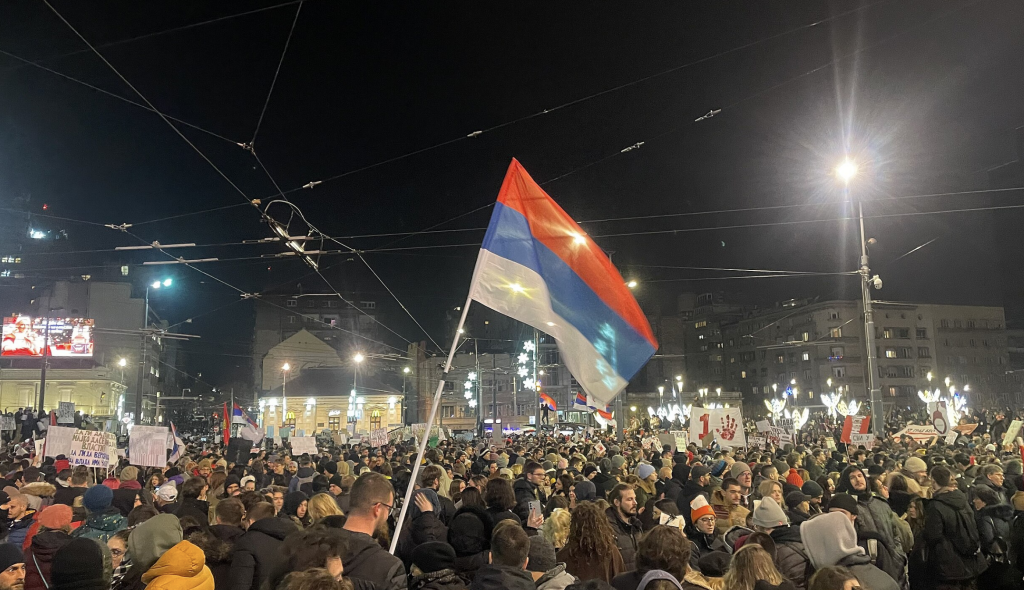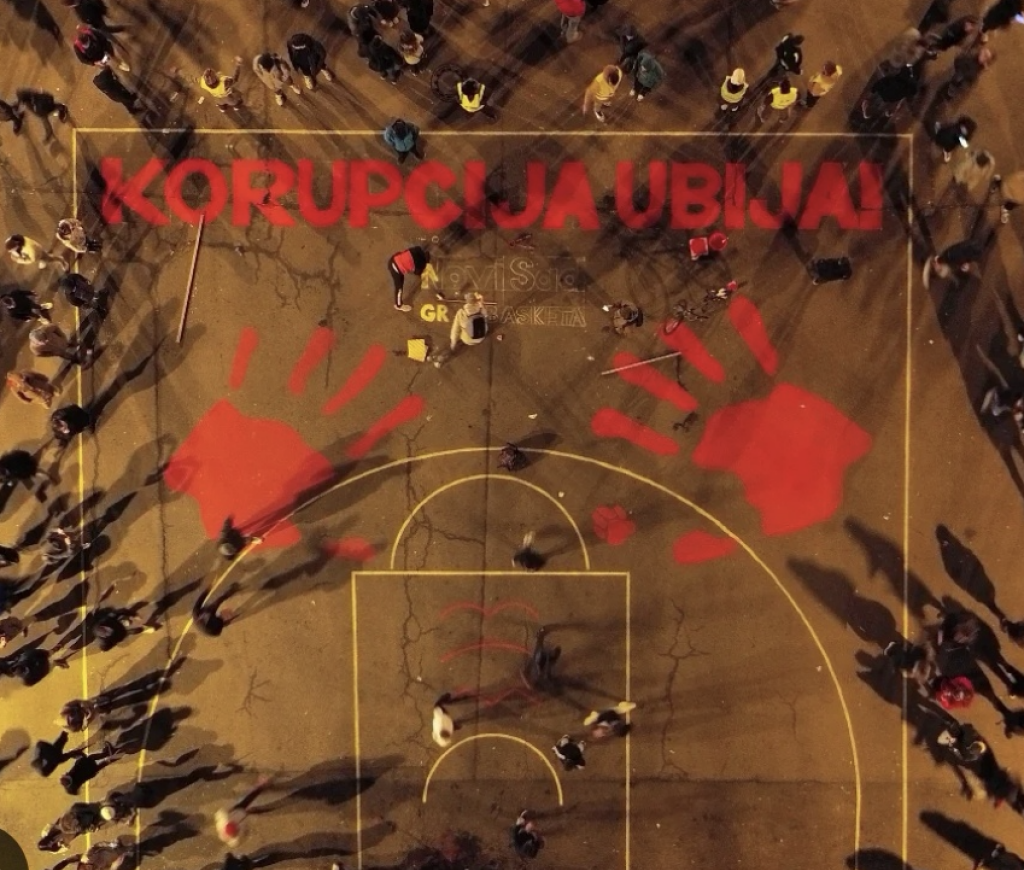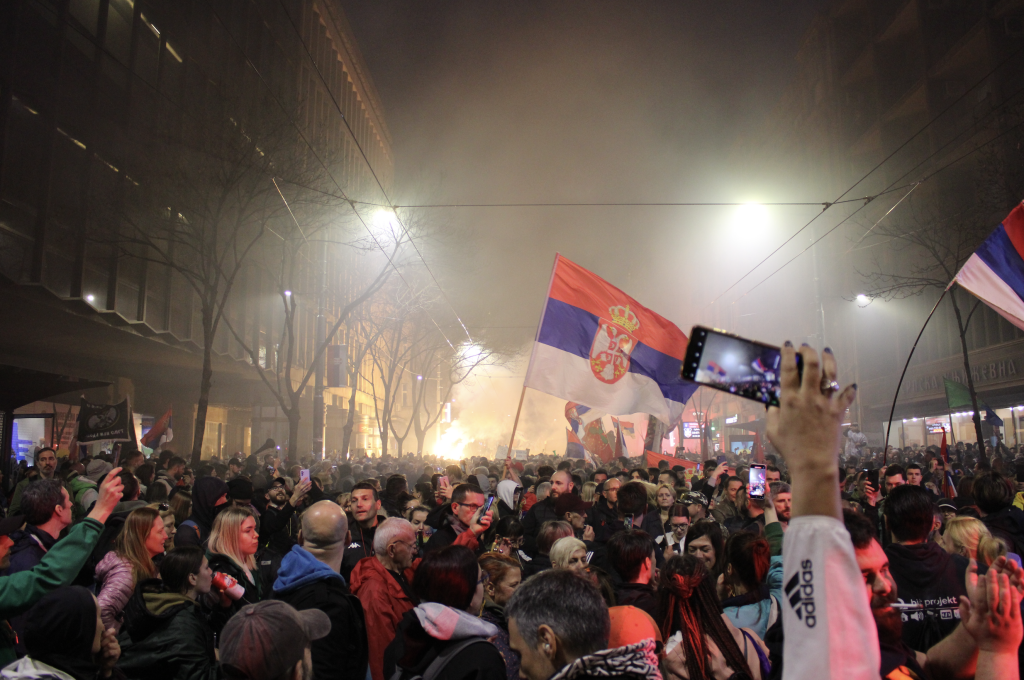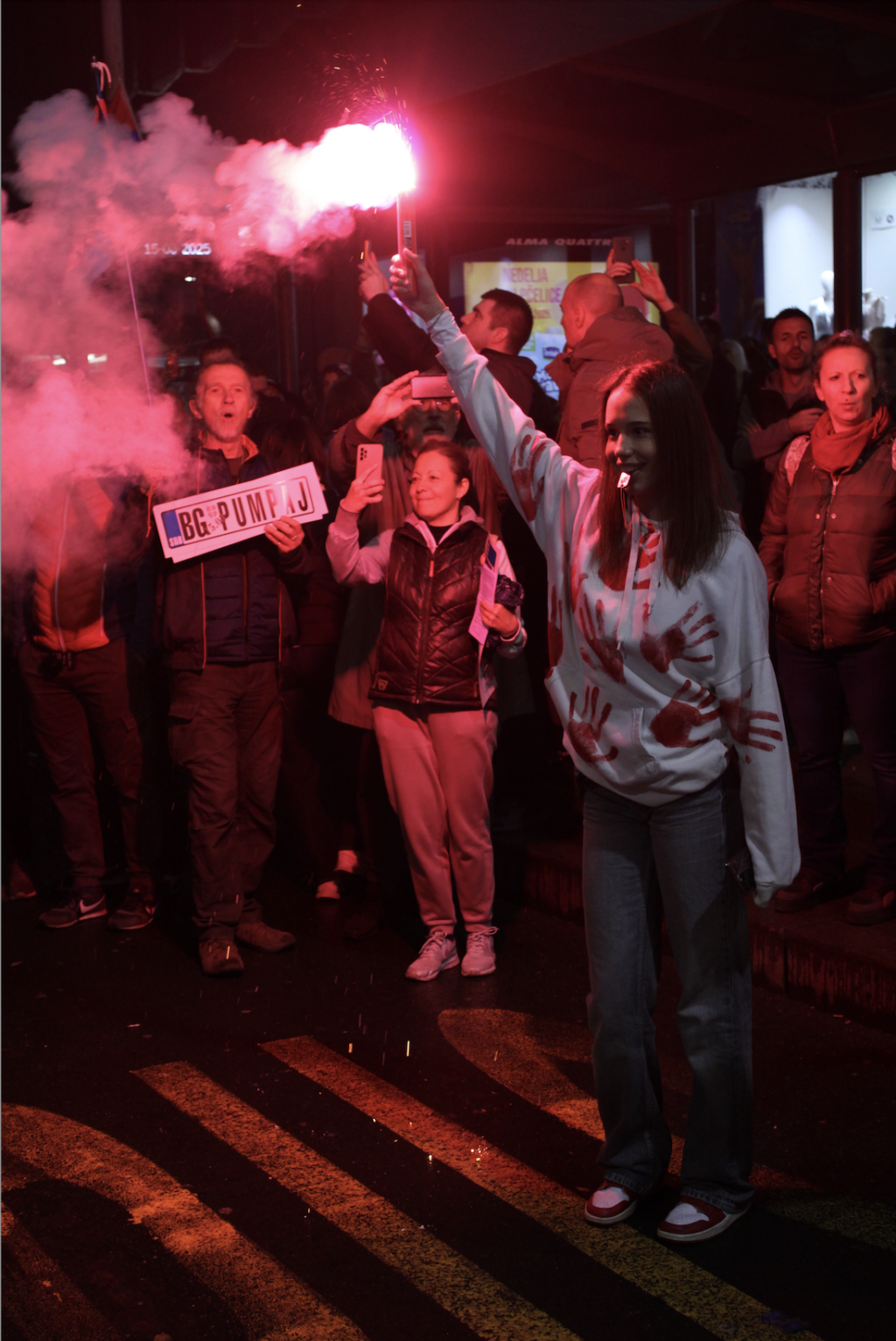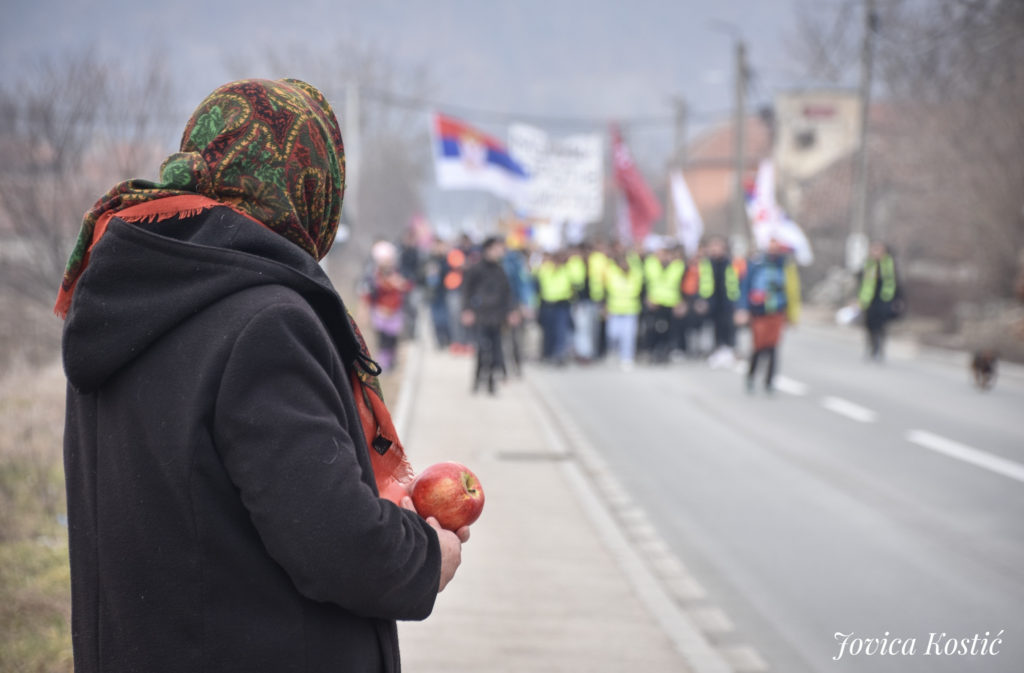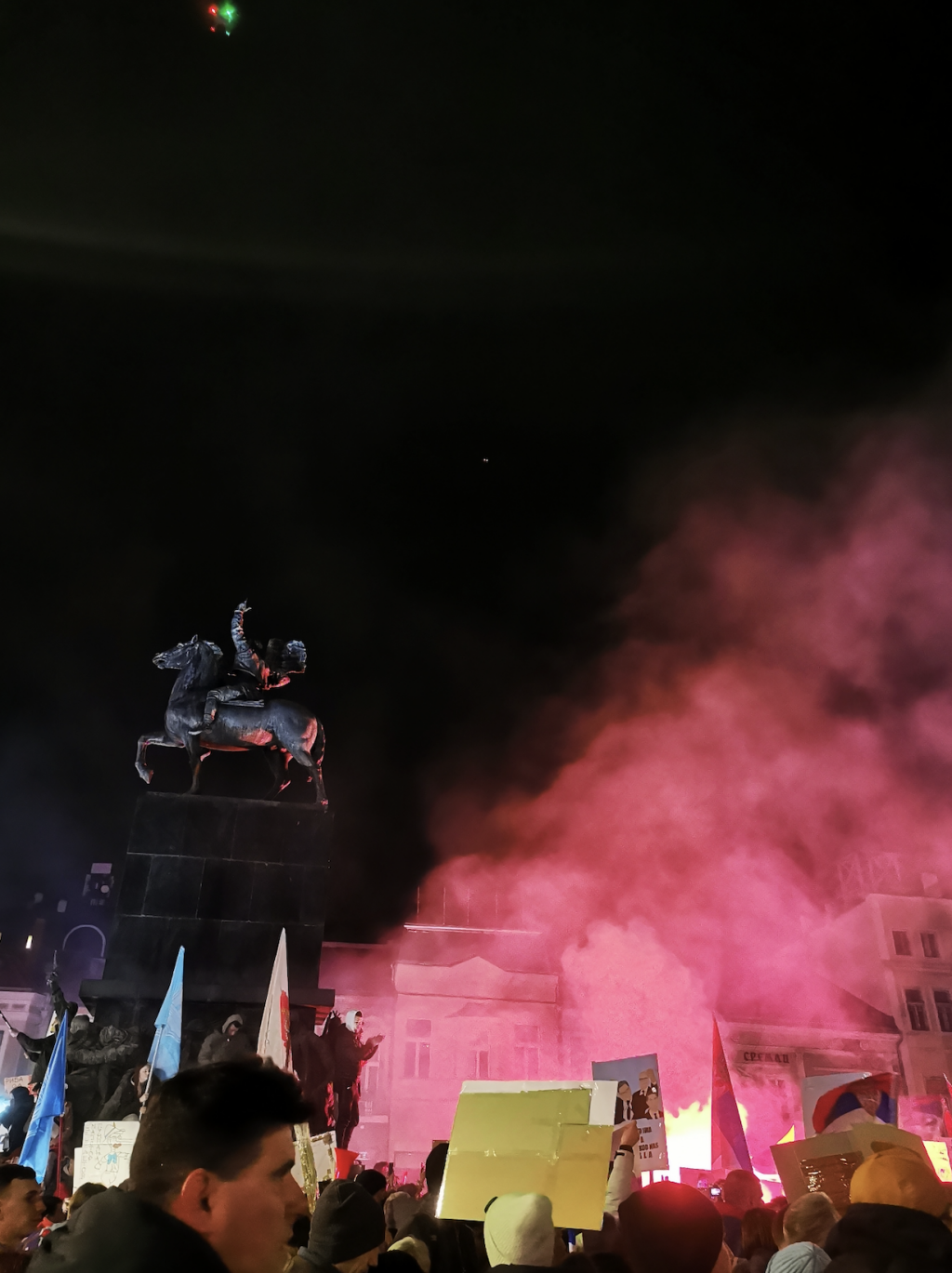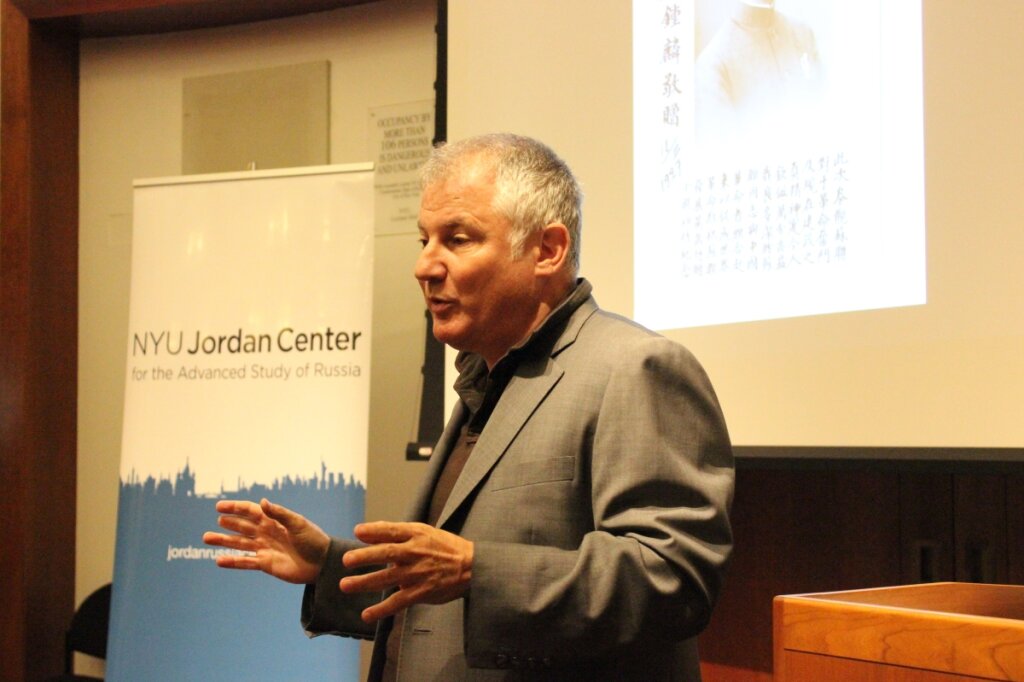Dijana Mitrović holds a PhD in Literary and Theatre Studies from UW-Madison, where she taught for more than ten years prior to returning to her native Serbia. Her academic interests include European modernism, avant-garde and contemporary theatre, body representation, and performance art.
Note: All photographs accompanying this post are published with their authors’ permission.
If at this time last year someone had said that the Serbian government would now be on the ropes, no one living in Serbia would have believed it. The authoritarian fortress of President Aleksandar Vučić, who has established himself as the state itself, appeared so invincible that even the most optimistic among his opponents couldn’t fathom the possibility of any change. Still, starting in November 2024, the student movement increasingly showed its strength, achieving broad national support and changing society in ways no one could have predicted.
It all started with a tragedy that clearly resulted from government corruption. Several tons of heavy canopy at the recently renovated Novi Sad railway station collapsed, killing sixteen people and injuring many more. Serbia was in shock, pain, and disbelief. From the very beginning, university and, later, high school students were the loudest groups demanding the government take responsibility for the tragedy—soon to be joined in solidarity by professors, teachers, lawyers, and, eventually, broader society as well.
Every day, at the exact time of the collapse, students organized moments of silence, blocking roads for fifteen minutes to remember fifteen lives lost (the sixteenth victim, 18-year-old Vukašin Crnčević, died on March 20). During one of these commemorative silences, activists from the governing party, the Serbian Progressive Party, violently attacked the protesters. Other assaults followed, igniting massive resistance to government-sanctioned violence and corruption all over Serbia.
It didn’t take long for the student movement to become the most popular political force in the country—according to polls from February 2025, it gained almost 70% nationwide approval, which is unprecedented in sharply divided Serbian society. Citizens started mimicking student actions, organizing moments of silence and various other forms of commemoration and resistance in their local communities. The possibility of freedom and fearlessness suddenly loomed large in a society that had just recently seemed so resigned.
The sense of sudden and profound change was everywhere: citizens felt more empowered to voice their anti-government opinions, while everyday communication became kinder, fostering an unprecedented solidarity. To those of us on the ground, the shift has felt almost fairy-tale-like. But how did all of this momentum come into being?
First, dissatisfaction with the overall situation in Serbian society had been brewing for a very long time. Many citizens were unhappy with rampant corruption and overall injustice, but since many protests have already failed—including the big 2023 protests, which were sparked by horrific mass shootings—no one believed that change was possible. And suddenly, there appeared a heterogeneous group of young, bright, apparently good-hearted people who started to organize resistance in extraordinary ways, sparking deeply hidden hopes.
Previous protests in Serbia have been very urban—both in the sense of their location, and in the accompanying culture. Meanwhile, the 2024 movement took the entire Serbian countryside by storm. Whenever there was a large protest planned, groups of students marched from city to city, spreading the message of resistance throughout rural Serbia. The country’s interior has been otherwise subjected to a total media blockade, since all five non-cable national broadcasters are pro-regime, with many acting as pure propaganda outlets. Yet the message underlying the protests is simple and requires no sophisticated spin or marketing. The students and those who follow them want only justice, and for institutions to do their job.
When President Aleksandar Vučić invited the protesters to dialogue with him, their response was simple: “It is not your jurisdiction. We want institutions to do their job. You are not in charge.” This message resonated deeply because it made obvious the President’s rampant abuse of power—indeed, his role is meant to be almost totally ceremonial. At the same time, this response showed that the students were firm in their convictions. They put forward five demands of which all but one (a bigger budget for public universities) could be reduced to the simple, yet seemingly unattainable demand: the rule of law.
Disenchanted with the Serbian opposition, and even more so with the existing government, ordinary Serbs embraced the student movement with great zeal. Although aware that everything is political, the students insist that their demands are not, meaning that they are not associated with any political party in the country. This choice has proven to be very successful—with this messaging, the movement currently encompasses all political fractions, from far left to far right, all under the banner of love, solidarity, and justice.
The beauty and success of the current student movement lies in its unparalleled inclusiveness. For the first time in recent Serbian history, youth from different national and religious backgrounds have been united by their common struggle for justice. They are embracing all citizens: of all nationalities, beliefs, young and old alike. Images of elderly ladies in villages sharing what little food they have with the marching students became overwhelmingly popular. The students greeted everyone with an open heart, insisting on peacefulness and on bettering Serbian society, so that they do not have to leave the country once they complete their degrees.
The students’ decision-making has occurred via plenum, epitomizing the exercise of direct democracy. They have no leaders, but only a rule that each student representative may appear on television only once, ensuring they remain leaderless and that the movement has many faces. This tactic has proved to be successful in more ways than one, making it difficult for the powers that be to target and publicly smear individual representatives, as has been standard operating procedure for past political opponents.
Using social media, this leaderless movement has spread its messages at lightning speed. Humorous and witty, their slogans and jokes became part of national folklore overnight. When embarking on hundred-mile-long marches, they encouraged each other by shouting pumpaj (pump it up), a word that is already a part of everyday speech. When people want to encourage one another or show support for the movement, they simply shout puuumpaaaj! And these days, this shout can be heard all the time in the street.
How powerful the movement has become is clear from the fact that, after one of the many violent attacks on the students in Novi Sad—again by ruling-party thugs—both the mayor of Novi Sad and the Prime Minister resigned. Meanwhile, the president did everything to make it appear as though demands are met, all while using government-controlled media to represent the protests as a whim of spoiled city children. Yet to this day, only one demand has been met—and even in that case, the satisfaction is only potential: there have been promises to raise university budgets, but the timing and amount remain unclear to date. This reticence on the government’s part comes as no surprise, since actually meeting all the demands would put Aleksandar Vučić and his clique in prison.
Inspired by the student movement, many large, peaceful protests of several hundred thousand people have taken place in Novi Sad, Kragujevac, Niš, Novi Pazar, including the largest protest ever held in Serbia, in Belgrade on 15 March, which some experts estimate had more than a million participants. Smaller-scale protests are occurring on a daily basis. It is fair to say that, for the last five months, Serbia has been in a constant state of civil unrest.
Given the (ab)normality of everyday life in Serbia, there is no question that President Vučić and his regime no longer have control over the country. There is equally no question that an incredible change has already happened in the consciousness of Serbia’s citizens. What is concerning, however, is that Europe and much of the rest of the world remain silent about this growing movement. Even more concerning is that the president’s response to the protests has grown steadily more repressive since his latest visit to Brussels. The people of Serbia can’t help but feel that the message at those meetings was, “Do what you need to do—as long as we get the natural resources we want, and Serbia can continue to be the dump for Europe’s toxic waste.”
Most recently, the protestors made an attempt to break the international media blockade and make the movement visible to the world. In April, a group of 80 students biked the 1400 kilometers to Strasbourg to plead their case and make themselves heard. Whether their pilgrimage will yield some more palpable results remains to be seen, but one thing is certain: Serbia is already changed—and we will keep on pumping in the rhythm of hope.

